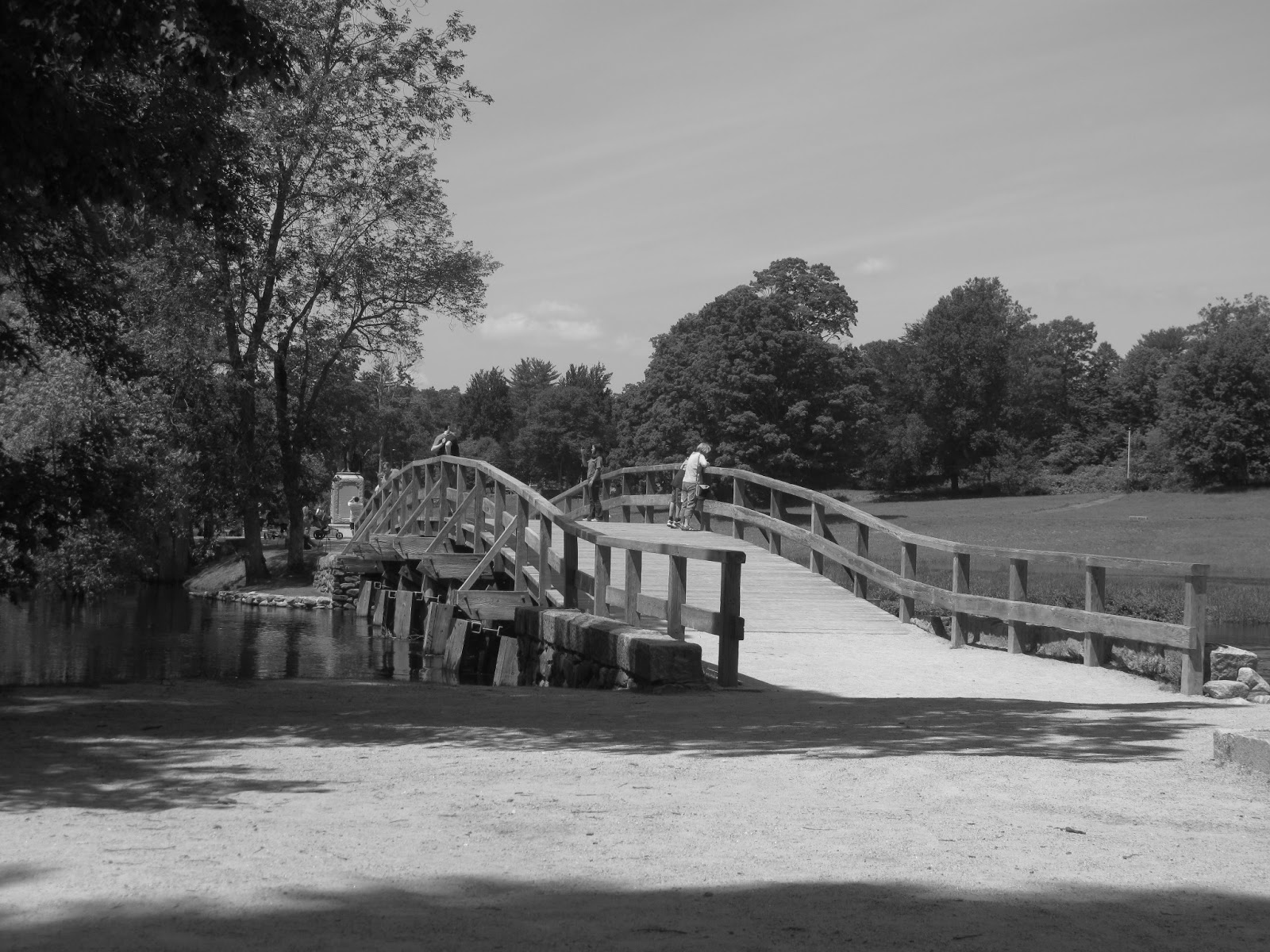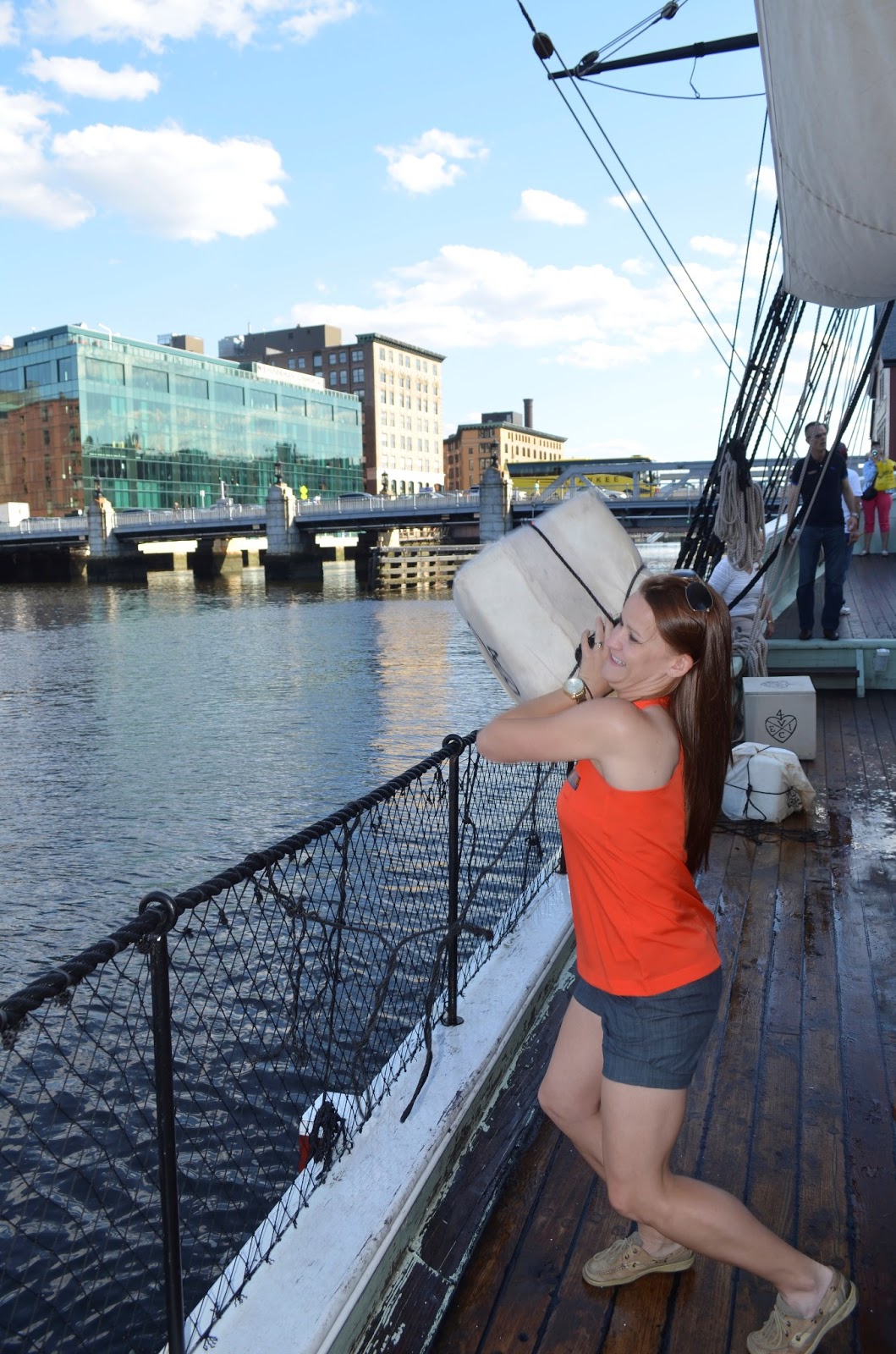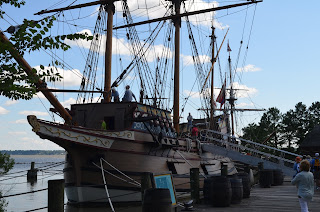In honor of the 4th, a post about where the fight for independence all began...
On Friday morning, Rachel and I split up to see different sites of interest, she headed to Harvard and I went on my way to Lexington and Concord. The Battle Road takes you along the road marched by the British Regulars (and the road of the Midnight Ride) from Lincoln, Mass. to Concord with several key stops along the way. On the night of April 18, 1775, 700 British Regulars made their way to Concord with secret orders to destroy military supplies stockpiled there by the Massachusetts militia. They were unaware that the Patriots were well informed of the British plan thanks to the help of British General Gage's unfaithful wife. The hidden supplies were moved and the men in the countryside prepared to fight.
The first skirmish occurred in Lexington between the Minutemen led by Captain Parker and the Regulars. Knowing the supplies had been hidden in Concord and severely outnumbered, Parker made no attempt to engage the Regulars; they could easily march to Concord, find nothing and return to Boston. There was no need to sacrifice his men for nothing so they stood on the Lexington Green, not blocking the road, showing political and military determination. Parker gave to order to "Stand your ground; don't fire unless fired upon, but if they mean to have a war, let it begin here." The Regulars marched in ordering the Minutemen to lay down their weapons but a shot was fired from an unknown source. The Regulars then opened fire and the majority of the Minutemen retreated. Eight militia men were killed, 10 wounded, and 1 Regular wounded. The Regulars continued to Concord where the militia cautiously awaited their arrival.
Upon reaching Concord, the Regulars where divided up to carry out their orders but had little success. The Minutemen sat atop a ridge overlooking the town and as they watched the search, their numbers swelled to 400 with men from the surrounding countryside answering the call to arms. A small infantry of Regulars (around 90 men) marched toward the North Bridge where the Minutemen were waiting. As the Regulars marched closer to the North Bridge, the Minutemen marched down to meet them but were ordered to not fire unless fired upon. There was much confusion among the Regulars and a shot rang out from a British soldier, "the shot heard 'round the world." Both sides opened fire from either side of the North Bridge.
Severely outnumbered, the British retreated back into the town and the minutemen moved back into the hills. Their numbers continued to grow to 1000 as they waited for the Regulars to make their next move. As the column of Regulars marched back to Boston, the colonial militia men, now 2,000 in number, waited along the road to ambush the troops who broke into a trot to escape the gunfire. The Regulars were rescued by reinforcements in Lexington but the ambushes continued, some homeowners along the way even joined the fight. The British officers lost control of their troops and the soldiers began entering the buildings searching for their attackers. They eventually reached Boston late in the day despite the 4,000 militia men who had answered the call to arms. The fighting had stopped, however by morning, over 15,000 militia men surrounded the city of Boston... The Revolutionary war had begun.
The first skirmish occurred in Lexington between the Minutemen led by Captain Parker and the Regulars. Knowing the supplies had been hidden in Concord and severely outnumbered, Parker made no attempt to engage the Regulars; they could easily march to Concord, find nothing and return to Boston. There was no need to sacrifice his men for nothing so they stood on the Lexington Green, not blocking the road, showing political and military determination. Parker gave to order to "Stand your ground; don't fire unless fired upon, but if they mean to have a war, let it begin here." The Regulars marched in ordering the Minutemen to lay down their weapons but a shot was fired from an unknown source. The Regulars then opened fire and the majority of the Minutemen retreated. Eight militia men were killed, 10 wounded, and 1 Regular wounded. The Regulars continued to Concord where the militia cautiously awaited their arrival.
Lexington Battle Green with statue of Captain John Parker
Upon reaching Concord, the Regulars where divided up to carry out their orders but had little success. The Minutemen sat atop a ridge overlooking the town and as they watched the search, their numbers swelled to 400 with men from the surrounding countryside answering the call to arms. A small infantry of Regulars (around 90 men) marched toward the North Bridge where the Minutemen were waiting. As the Regulars marched closer to the North Bridge, the Minutemen marched down to meet them but were ordered to not fire unless fired upon. There was much confusion among the Regulars and a shot rang out from a British soldier, "the shot heard 'round the world." Both sides opened fire from either side of the North Bridge.
The North Bridge
Severely outnumbered, the British retreated back into the town and the minutemen moved back into the hills. Their numbers continued to grow to 1000 as they waited for the Regulars to make their next move. As the column of Regulars marched back to Boston, the colonial militia men, now 2,000 in number, waited along the road to ambush the troops who broke into a trot to escape the gunfire. The Regulars were rescued by reinforcements in Lexington but the ambushes continued, some homeowners along the way even joined the fight. The British officers lost control of their troops and the soldiers began entering the buildings searching for their attackers. They eventually reached Boston late in the day despite the 4,000 militia men who had answered the call to arms. The fighting had stopped, however by morning, over 15,000 militia men surrounded the city of Boston... The Revolutionary war had begun.


















































